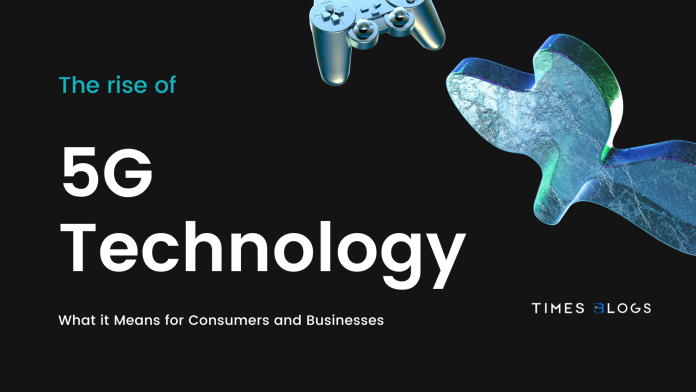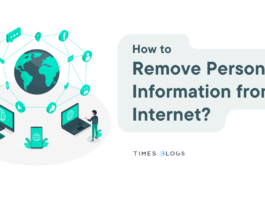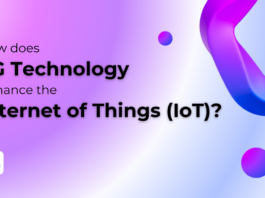Introduction
The fifth generation of mobile technology, or 5G, is here, and it’s poised to change the way we live and work. With speeds that are up to 100 times faster than current 4G networks, 5G promises to revolutionize everything from the way we communicate and consume media to the way we operate businesses and industries.
In this article, we’ll explore what 5G is, how it works, and what it means for consumers and businesses. We’ll also take a look at some of the challenges and opportunities that come with this new technology.
What is 5G Technology?
5G is the latest iteration of mobile technology that promises to deliver faster speeds, lower latency, and greater capacity than its predecessors. At its core, 5G is a wireless network that uses higher radio frequencies than previous generations of wireless technology. These higher frequencies, known as millimeter waves, allow for greater data capacity and faster data transfer speeds.
How Does 5G Technology Work?
To understand how 5G works, it’s important to first understand the different types of frequencies used in wireless technology. Frequencies are measured in hertz (Hz), and the higher the frequency, the higher the data capacity and transfer speed.
Low-band frequencies, which are used in current 4G networks, have a frequency range of 600 MHz to 2.6 GHz. These frequencies can travel long distances but have limited data capacity and transfer speeds.
Mid-band frequencies, which have a frequency range of 2.6 GHz to 40 GHz, offer faster data transfer speeds and greater data capacity than low-band frequencies. However, they have a shorter range than low-band frequencies.
High-band frequencies, or millimeter waves, have a frequency range of 24 GHz to 100 GHz. These frequencies offer the fastest data transfer speeds and greatest data capacity, but they have a very short range and are easily blocked by objects such as buildings and trees.
5G networks use a combination of low-band, mid-band, and high-band frequencies to provide faster speeds and greater capacity. Low-band frequencies are used for coverage, while mid-band frequencies are used for capacity and high-band frequencies are used for ultra-fast speeds.
What Are the Benefits of 5G Technology for Consumers?
Faster Speeds
One of the biggest benefits of 5G technology for consumers is faster speeds. With download speeds of up to 20 gigabits per second, 5G is up to 100 times faster than current 4G networks. This means that you can download movies, music, and other content in seconds rather than minutes.
Lower Latency
Another benefit of 5G technology is lower latency. Latency refers to the time it takes for data to travel from one point to another. With 5G, latency is expected to be as low as one millisecond, compared to 50 milliseconds for 4G. This means that you can enjoy seamless streaming, gaming, and other online activities without lag or buffering.
Greater Capacity
5G technology also offers greater capacity than previous generations of wireless technology. This means that more devices can be connected to the network without slowing down the speed or performance of the network. This is especially important as more and more devices become connected to the internet of things (IoT).
Enhanced Connectivity
5G technology also offers enhanced connectivity for consumers. With 5G technology, consumers can expect better coverage and connectivity, even in areas that were previously difficult to reach with 4G LTE. This means that consumers can stay connected to the internet and their devices wherever they go.
New Applications and Services
Finally, 5G technology is expected to bring new applications and services to consumers. With faster speeds, lower latency, and improved capacity, 5G networks can support a wide range of new applications and services, such as virtual reality, augmented reality, and the Internet of Things (IoT). These new applications and services have the potential to improve the way that consumers live, work, and interact with technology.
What Are the Benefits of 5G Technology for Businesses?
Increased Productivity
One of the most significant benefits of 5G technology for businesses is increased productivity. With faster speeds, lower latency, and improved capacity, 5G networks can support a wide range of new applications and services that can help businesses work more efficiently. For example, businesses can use 5G-enabled sensors to monitor equipment and identify potential issues before they lead to downtime or maintenance issues. This can lead to increased efficiency and reduced costs.
Improved Communication and Collaboration
5G technology also offers improved communication and collaboration for businesses. With faster speeds and lower latency, employees can work together on projects in real-time, regardless of where they are located. This can help businesses save time and reduce the need for travel and face-to-face meetings.
Enhanced Customer Experiences
5G technology can also enhance customer experiences for businesses. For example, businesses can use 5G-enabled sensors to collect data on customer behavior and preferences, allowing them to personalize products and services and provide a better customer experience.
New Revenue Streams
5G technology also offers new revenue streams for businesses. With faster speeds, lower latency, and improved capacity, businesses can develop new applications and services that were not possible with previous generations of wireless technology. This can lead to new revenue streams and increased competitiveness.
Improved Safety and Efficiency
5G technology can also improve safety and efficiency for businesses. For example, self-driving cars can use 5G-enabled sensors and cameras to communicate with other vehicles and infrastructure, allowing for safer and more efficient transportation. This can help businesses reduce accidents and improve their bottom line.
Examples of 5G Technology Applications
5G technology has the potential to revolutionize a wide range of industries and applications. Here are a few examples:
- Smart Cities
One of the most significant applications of 5G technology is in smart cities. With 5G networks, cities can use sensors and other Internet of Things (IoT) devices to collect data on traffic, air quality, and other environmental factors. This data can be used to optimize traffic flow, reduce pollution, and improve public safety.
- Manufacturing
Manufacturing is another area where 5G technology can be used to great effect. With 5G-enabled sensors and real-time data analysis, manufacturers can monitor production lines and identify potential issues before they lead to downtime or quality issues. Additionally, 5G networks can support the use of robotics and other advanced manufacturing technologies, leading to increased efficiency and productivity.
- Gaming
5G technology also has significant potential applications in gaming. With faster speeds and lower latency, gamers can enjoy high-quality, immersive gaming experiences on mobile devices and other platforms. Additionally, 5G networks can support the development of cloud gaming services, where games are streamed from the cloud to a user’s device, reducing the need for high-powered local hardware.
- Autonomous Vehicles
5G technology can be used to support the development and deployment of autonomous vehicles. With 5G-enabled sensors and cameras, self-driving cars can communicate with other vehicles and infrastructure in real-time, allowing for safer and more efficient transportation. Additionally, 5G networks can support the development of connected car services, such as real-time traffic updates and predictive maintenance alerts.
- Healthcare
5G technology also offers many potential applications in healthcare. With faster speeds and lower latency, doctors and other healthcare professionals can use remote monitoring devices and virtual reality tools to provide high-quality healthcare services to patients in remote areas. Additionally, 5G networks can support real-time data transmission and analysis, allowing for faster and more accurate diagnoses and treatment.
- Transportation
5G technology can also be used in transportation to improve safety and efficiency. For example, self-driving cars can use 5G-enabled sensors and cameras to communicate with other vehicles and infrastructure, allowing for safer and more efficient transportation.
- Entertainment
5G technology can also be used in entertainment to provide immersive experiences. For example, virtual reality (VR) and augmented reality (AR) applications can use 5G technology to provide high-quality, low-latency experiences that feel realistic and immersive.
Challenges of 5G Technology
While 5G technology has many benefits, it also comes with some challenges. Here are a few examples:
- Infrastructure and Cost
One of the biggest challenges associated with 5G technology is infrastructure and cost. 5G networks require significant investment in new infrastructure, including towers, small cells, and fiber-optic cables. This can be a significant cost for network operators, and it can take several years to build out a comprehensive 5G network. This can also be a barrier to entry for smaller network operators who may not have the resources to build out a 5G network.
- Spectrum Availability
Another challenge associated with 5G technology is spectrum availability. 5G networks require access to high-frequency spectrum, which can carry more data but does not travel as far or penetrate buildings as well as lower-frequency spectrum. As a result, network operators may need to deploy more cell sites and small cells to provide coverage in areas where high-frequency spectrum is used.
- Interference
5G technology also faces the challenge of interference. Higher-frequency spectrum used in 5G networks can be more easily blocked by physical obstacles such as buildings, trees, and even rain. This can cause reduced signal strength and increased interference, which can negatively impact the performance of 5G networks.
- Cybersecurity
5G technology also faces cybersecurity challenges. With more devices connected to 5G networks and more data being transmitted, there is an increased risk of cyberattacks. Network operators and device manufacturers must take steps to ensure the security of 5G networks and devices to prevent cyberattacks.
- Regulatory Issues
Finally, 5G technology also faces regulatory challenges. Different countries and regions have different regulations and standards for 5G networks, which can make it difficult for network operators and device manufacturers to develop and deploy 5G technology. Additionally, there may be concerns about the potential health effects of 5G technology, which can lead to regulatory barriers and delays.
Conclusion
5G technology is here, and it’s poised to revolutionize the way we live and work. With faster speeds, lower latency, and greater capacity than previous generations of wireless technology, 5G has the potential to transform a wide range of industries and applications. While there are some challenges that come with 5G technology, the benefits far outweigh the risks. As 5G networks continue to be implemented around the world, consumers and businesses alike can look forward to a future that is faster, more efficient, and more connected than ever before.




